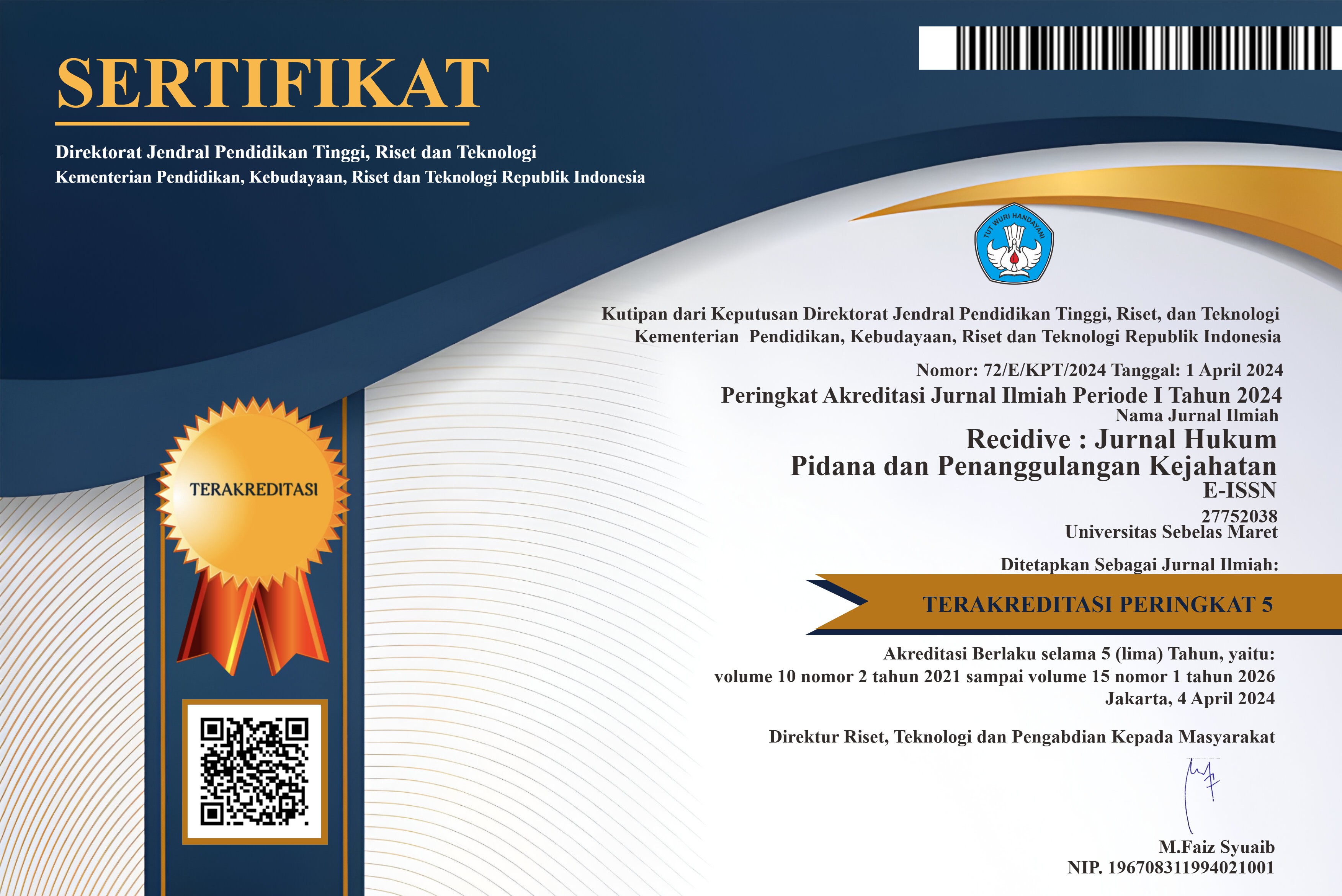PENINGKATAN TINDAK PIDANA ANAK BERUPA PENCABULAN DI PROVINSI D.I. YOGYAKARTA SELAMA MASA PANDEMI COVID-19
Abstract
This research examines the problem of increasing child crime in the form of obscenity that occurred during the Covid-19 pandemic in the Province of D.I. Yogyakarta. The writing of this law is included in the writing of empirical juridical law. The author emphasizes the existence of legal materials in the form of primary and secondary data obtained by field studies in the form of interviews and literature studies that are relevant to the topic of discussion in research using qualitative analysis. The results of the study show that in the Province of D.I. Yogyakarta The criminal act of obscenity is not only committed by adults, but many students are included in the category of children. In this case, a child who commits a crime must of course be held accountable for his actions and be processed according to applicable legal provisions. The students who were still in the child category committed a criminal act of obscenity during the pandemic due to several factors, one of which was the result of government policy through Kemdikbud Circular Letter No. 15 of 2020 about Guidelines for Learning from Home During the Covid-19 Period. At the time before the Covid-19 pandemic, children carried out face-to-face learning activities carried out at school. He explained that the increase in cases of sexual abuse was one of the impacts caused by the reduced level of parental supervision of children due to the Covid-19 pandemic.
Keywords
Full Text:
PDF (Bahasa Indonesia)References
Annisa, F. (2016). Penegakkan Hukum Terhadap Anak Yang Melakukan Tindak Pidana Pencabulan Dalam Konsep Restorative Justice. ADIL: Jurnal Hukum, 7(2), 202–211.
Bonger, W. A. (1962). Pengantar Tentang Kriminologi (Terjemahan RA Koesnoen). Pembangunan, Jakarta.
Gultom, M., & Sumayyah, D. (2014). Perlindungan hukum terhadap anak dalam sistem peradilan pidana anak di Indonesia. 90.
Papalia, N., Mann, E., & Ogloff, J. R. P. (2021). Child sexual abuse and risk of revictimization: Impact of child demographics, sexual abuse characteristics, and psychiatric disorders. Child Maltreatment, 26(1), 74–86.
Putra, R. S., & Kadarisman, Y. (2016). Kriminalitas di Kalangan Remaja (Studi Terhadap Remaja Pelaku Pencabulan di Lembaga Pemasyarakatan Anak Kelas II B Pekanbaru). Riau University.
Scoglio, A. A. J., Kraus, S. W., Saczynski, J., Jooma, S., & Molnar, B. E. (2021). Systematic review of risk and protective factors for revictimization after child sexual abuse. Trauma, Violence, & Abuse, 22(1), 41–53.
Sidabutar, R., & Suhatrizal, S. (2018). Perlindungan Hukum terhadap Anak yang Melakukan Tindak Pidana Pencabulan pada Putusan No. 2/pid. sus/2014PN. Mdn. Jurnal Ilmiah Penegakan Hukum, 5(1), 22–31.
Soetedjo, W., & Melani. (2017). Hukum Pidana Anak (Edisi Revisi) (A. F. Susanto & A. Gunarsa (eds.); Cetakan Ke). Refika Editama.
Wahyudi, S. (2011). Tanggung Jawab Rumah Sakit Terhadap Kerugian Akibat Kelalaian Tenaga Kesehatan Dan Implikasinya. Jurnal Dinamika Hukum, 11(3), 505–521.
Wibowo, H. E., & Rochaeti, N. (2015). Kebijakan Formulasi Hukum Pidana Dalam Rangka Penanggulangan Tindak Pidana Pencabulan Dengan Pelaku Anak. Law Reform, 11(2), 216–229.
Refbacks
- There are currently no refbacks.




.jpg)





